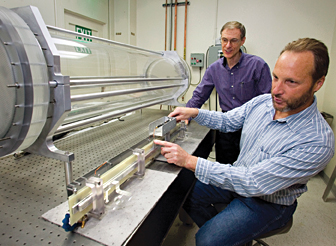According to researchers at University of Florida Proton Therapy Institute, they have progressed the way that we can treat cancerous tumors using advanced proton therapy.
By developing a new way in which protons are delivered, physicians may be able to treat more deeply rooted tumors, larger tumors and tumors located close to vital internal organs. All of these placements have posed serious problems to tumor treatments in the past, as current treatments pose a significant risk to the surrounding body tissue as well as the intruding tumor.

"With proton therapy, our ability to precisely deliver radiation to the tumor without damaging normal healthy tissue is the main advantage for all patients," said Dr. Nancy Mendenhall, UF Proton Therapy Institute's medical director. "Uniform scanning takes us to the next step in improving delivery of protons, eventually leading to more intense and fewer doses and the potential to further decrease risk of complications."
The new device, uniform scanning, moves a bean of protons in a sweep, or scan, enabling the beam to reach to greater depths than previously capable. Previously used scattering methods, have a smaller range of treatment area and with shallower depths in the body.
Uniform scanning offers an advantage to patients suffering from tumors in the brain, neck, spinal cord, and other areas that are sensitive to treatment. Proton therapy is also a viable treatment option for patients with prostate cancer and sarcoma patients with tumors larger than 9.4 inches.
"The immediate advantages of uniform scanning are evident in the increased number of patients and types of tumors we will be able to treat," said Dr. Zuofeng Li, UF Proton Therapy Institute's director of physics. "Over time, we expect additional clinical advantages to emerge."
By advancing proton therapy to include uniform scanning, and continuing to develop new, better and more effective treatment options for cancer patients, science comes one step closer to finding a long term solution.


